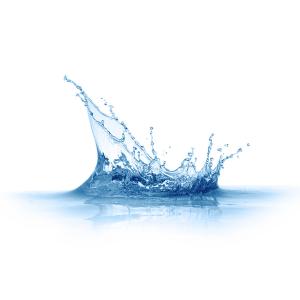(单词翻译:单击)
听力文本
This is Scientific American — 60-Second Science. I'm Ryan Mandelbaum.
Got a minute?
When you spill a liquid on the ground, it splashes. But if you're a guy using a urinal, or, more important, if the liquid is dangerous, say, an infected blood sample, you want to limit splashing. In other words:
"If an accident happens, you want the drop to fall onto the surface and that's it. It just stays there as a single body."
Alfonso Castrejón-Pita, an engineering professor at Oxford University.
"So you could imagine the situation of having your [lab] bench covered with these kinds of materials so they become safer. And the same for a kitchen. Now you're in a kitchen, you are handling raw chicken, and the last thing you want is to have splashes, where you could be transmitting salmonella or these kinds of ugly things that you could get when you are handling raw meat."
He and his colleagues found that the softer the surface the smaller the splash. Their study is in the journal Physical Review Letters.

The researchers prepared a bunch of increasingly squishy silicone surfaces and released drops of ethanol onto them from different heights. They captured video of the splashes with a super-slow-motion camera that records more than 100,000 frames per second. And they found that the drops eventually stopped splashing on the softest surfaces.
So far that all sounds predictable. But computer models of the splashes revealed interesting details.
At the moment the blob of liquid makes contact with the surface, the bottom of the drop flattens out and the pressure increases. The ring of pressure spreads towards the drop's edges. If the surface is too hard, the ring of high pressure creates tiny droplets that explode from the main drop's edges. But the softest surfaces deform in response to the drop hitting them—and that prevents the pressure from getting high enough to cause that explosion.
Sadly, you won't see squishy coatings on urinals just yet, or in your laboratories—anti-splash materials are too frail.
"The softest ones are quite delicate so you wouldn't be able to make a laboratory bench with them, they'd get damaged quite quickly."
So we'd need soft coating materials robust enough to withstand daily wear before the splash is relegated to history's trash bin...or toilet.
Thanks for listening for Scientific American — 60-Second Science Science. I'm Ryan Mandelbaum.
参考译文
这里是科学美国人——60秒科学。我是瑞安·曼德尔鲍姆。
液体撒到地面时会四处飞溅。但如果你是一个用小便器小便的男性,或者更重要的,如果是受感染的血液样本这样的危险液体,你会想防止液体飞溅。换而言之:
“如果发生意外,你希望它仅仅落在表面上。让液滴作为整体留在那里。”
Alfonso Castrejón-Pita是是牛津大学的工程学教授。
“可以想象一下,如果你(实验室)的工作台上铺满了这些材料,那会变得更加安全。厨房也是一样。假设你现在在厨房里,你正在处理生鸡,你最不想发生的就是让液体溅出来,因为在你处理生肉时,这可能会让你被传染沙门氏菌或接触到其他不好的东西。”
他和同事发现,接触面越柔软,飞溅程度越小。该研究结果发表在《物理评论快报》期刊上。
研究人员准备了一堆会变得愈发湿软的硅胶表面,然后从不同高度滴放乙醇液滴。他们用超慢动作镜头记录下了液滴飞溅的视频,超慢镜头每秒钟可以记录10万多帧。他们发现,在最柔软的表面,液体几乎不会产生飞溅现象。
目前来看一切听起来都是可以预测的。但是,液体飞溅的计算机模型揭露了有趣的细节。
当液体与物体表面接触时,液滴的底部会变平,同时压力会增加。然后压力会向边缘扩散。如果表面太硬,高压就会产生小液滴,这些小液体是主液滴边缘发生爆炸所产生的。但是,最柔软的表面会影响坠落到表面的液滴,这就能阻止由于压力过大而产生液滴爆裂的现象。
不幸的是,你不会在小便池或者实验室看到粘糊糊的涂料,因为这些防溅材料过于脆弱。
“最柔软的材料非常脆弱,所以不能用它们制成实验室的工作台,这些材料非常容易损坏。”
在液体沦为历史的垃圾箱或厕所之前,我们需要可以经受住日常磨损、柔软耐用的镀膜材料。
谢谢大家收听科学美国人——60秒科学。我是瑞安·曼德尔鲍姆。
译文为可可英语翻译,未经授权请勿转载!
重点讲解
重点讲解:
1. in other words 换言之;换句话说;也就是说;
例句:In other words, the worst thing that one can do is to cheat oneself.
换句话说,一个人所做的最糟糕的一件事便是自欺。
2. so far 迄今为止;到目前为止;
例句:He has a spotless record so far.
他的操行记录至今无任何污点。
3. make contact with 与…联络;和…取得联系;
例句:Then, after she had become famous, he tried to make contact with her.
后来,她出名之后,他曾试图与她联系。
4. in response to 回复;回答;回应;
例句:In response to their hospitality, we wrote a thank-you note.
为回报他们的热情,我们写了一封感谢信。


